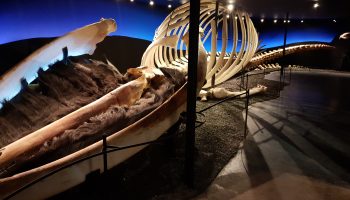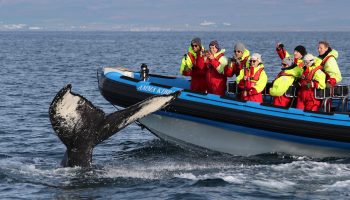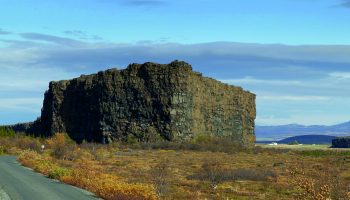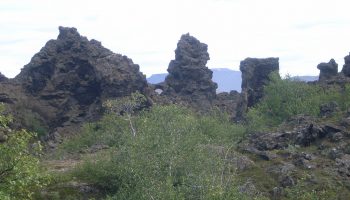The Diamond Circle
The Diamond Circle is the equivalent of what you must see in the Northeast of Iceland. It is a 260 km circuit which takes you through the most popular attractions of the area, known also as the most scenic landscapes in the whole country. Húsavík is the main town and obvious starting and ending point.
Goðafoss (“Falls of the gods”) it is not a very high waterfall but still one of the most spectacular ones in Iceland. The water of Skjálfandafljót’s river falls from 12 meters height and the waterfall looks like a horseshoe. This place is highly connected with one major event that occurred in Iceland in the year 1000, when Iceland converted to Christianity. According to the Sagas, that year, the Law speaker Þorgeir of Ljósavatn threw his statues of the gods into the falls after he returned home from the Alþingi (the Icelandic parliament), hence the name. Just below Goðafoss is another place with an interesting story, a hole through the lava known as Hansensgat (“Hansen’s hole”) into which a chemist from Akureyri named Hansen, fell but survived unhurt. Undirheimaförin (“Journey to the Underworld”) by the poet Kristján Jónsson, called Fjallaskáld, commemorates the event.
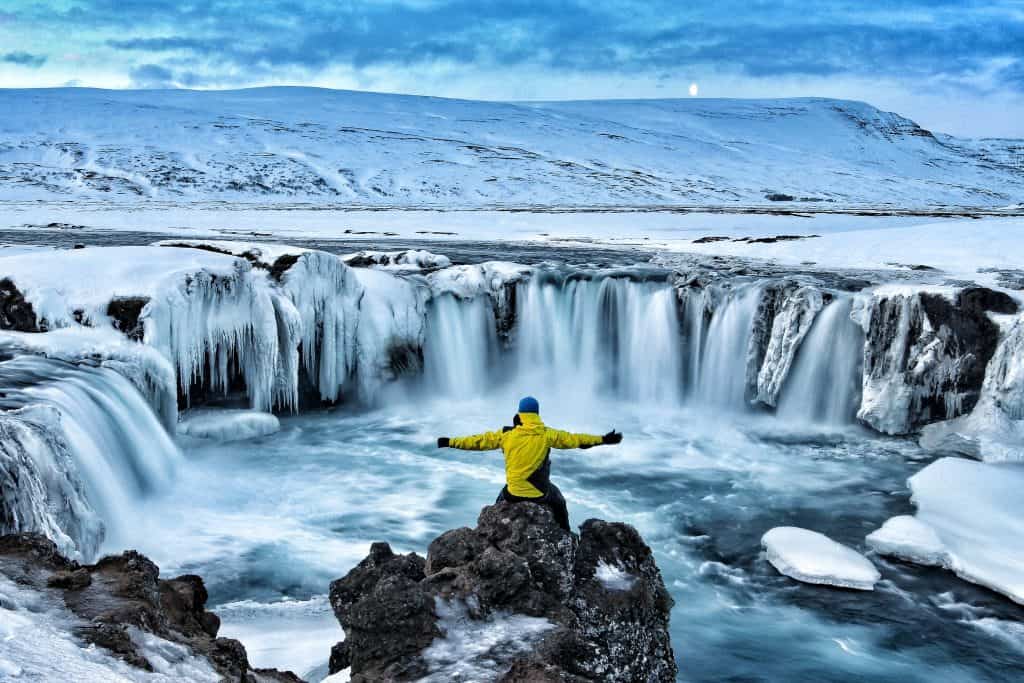
Þorgeirskirkja is a church built in commemorating the Christianisation of Iceland at Ljósavatn, not far away from Goðafoss. The church was built in the year 2000, celebrating 1000 years of Christianity and it is named after Þorgeir.
Grenjaðarstaður is a picturesque traditional turf house farm that gives the chance to travel back in time into Iceland’s rural past. The well-curated display illustrates the daily life not so long ago.
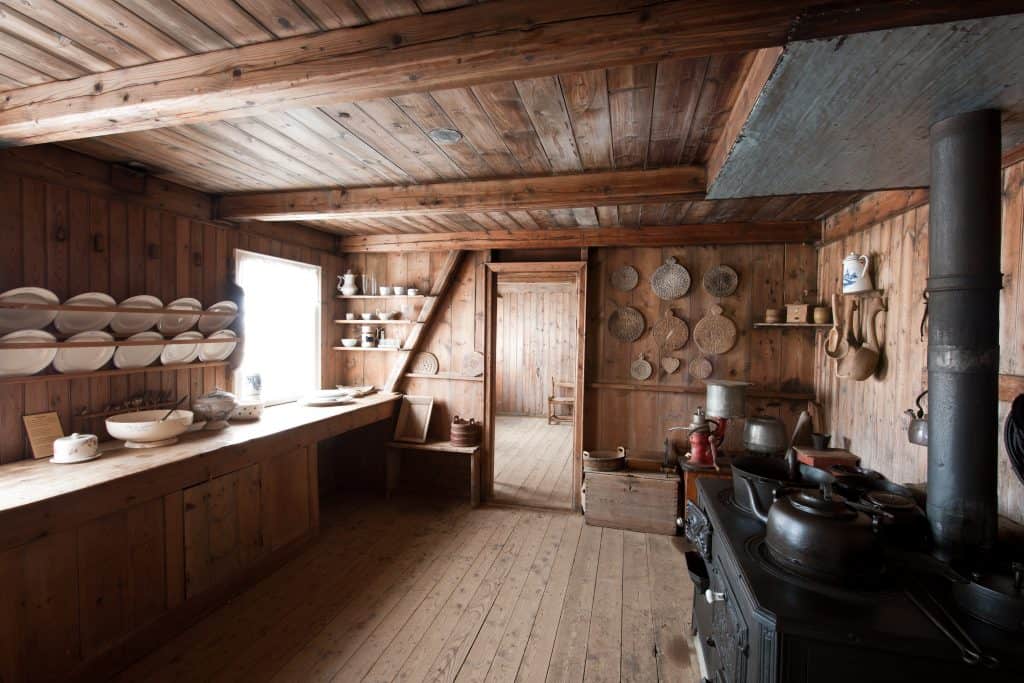
On the eastern shore of Skjalfandi Bay lies Húsavík. For decades, the major industry has been fishing and fish processing. Now Húsavík is renowned for being the whale capital of Iceland and one of the best spots in the world with an average of 98% successful trips. Several companies offer tours on romantic oak or speedy RIB boats.
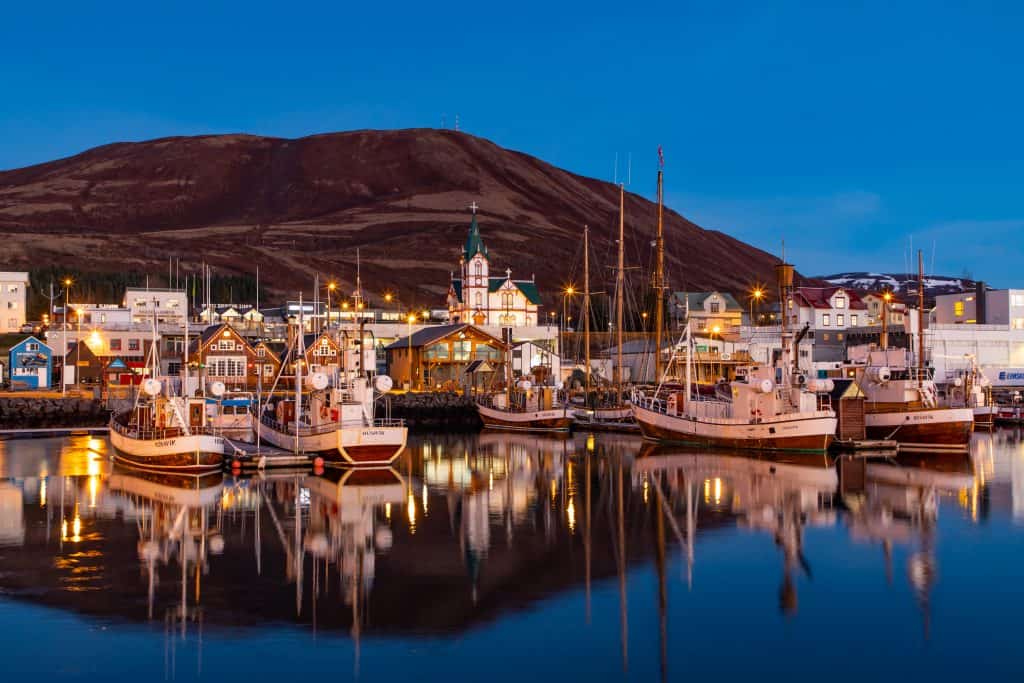
The harbour is the heart of town and has developed into a thriving hub for whale watchers with restaurants, booking offices and souvenir shops. The Whale Museum hosts a 25 m long skeleton of a Blue Whale, while the Exploration Museum is all about the Apollo Astronaut training that happened near the town in the 1960s. The pretty place is flanked by mountains on one side and the bay on the other. The wooden church dates back to 1907 and takes a pride place on the main road while a lovely park invites for evening strolls. A new brewery offers locally produced craft beer. Húsavik has a camping ground and swimming pool.
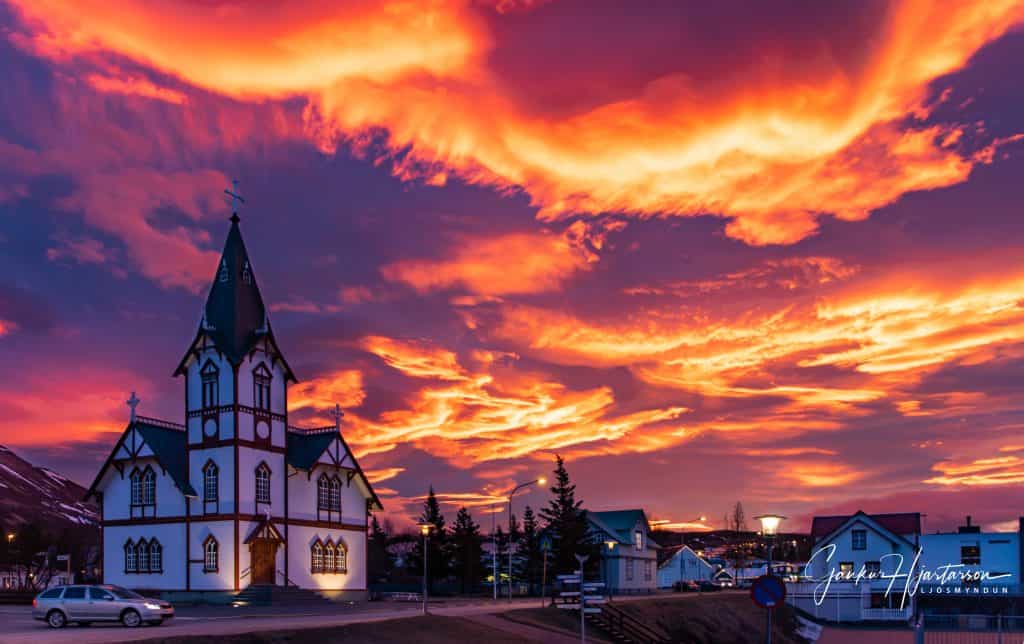
On the cliff besides the lighthouse of Husavik you will find Geosea, the newly opened geothermal sea baths. It is the perfect place to soak in hot and mineral rich sea water while enjoying a breathtaking view over the bay.
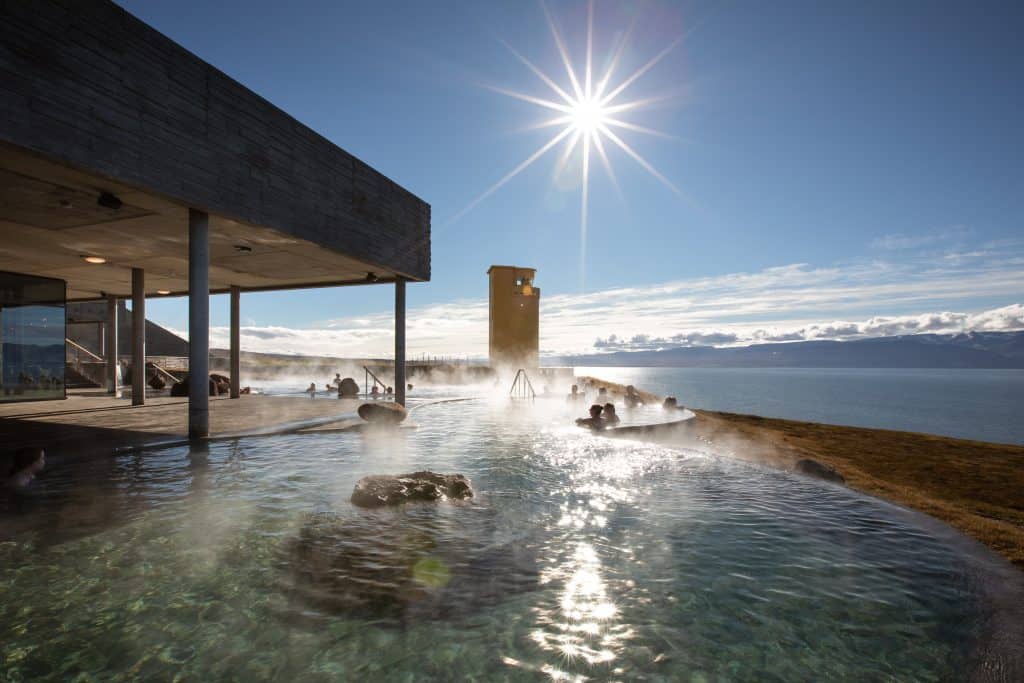
A few kilometres north of town is the small island Lundey or Puffin island where 200 000 puffins nest May- August. It is possible to get close to the island on a whale watching tour.
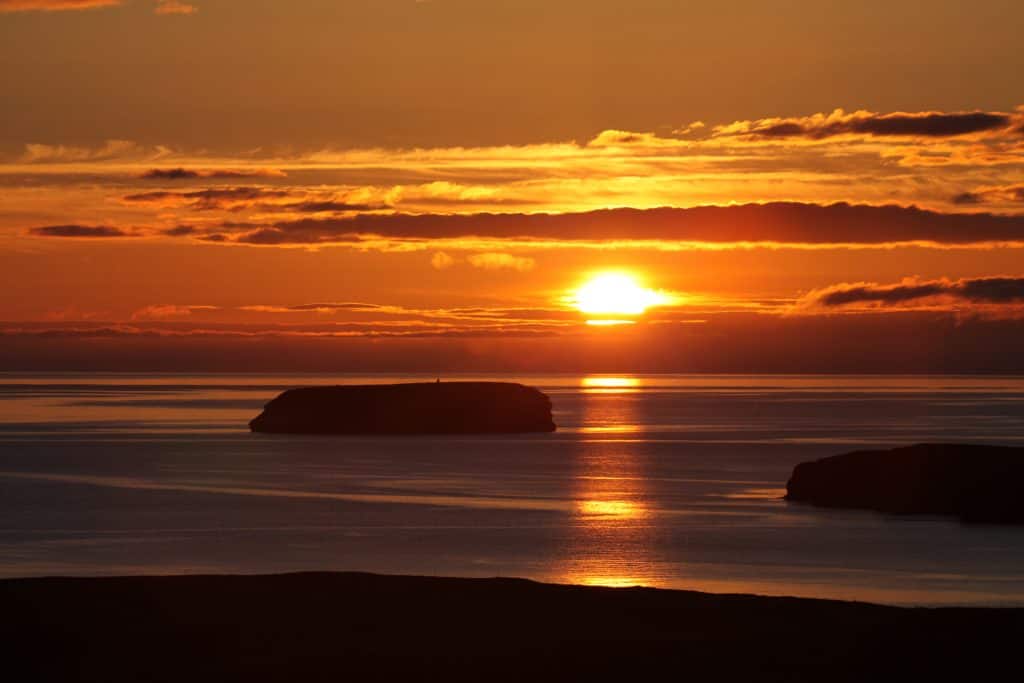
Tjörnes Peninsula. This piece of headland tucked in the north is an area of incredible beauty and uniqueness. There is a puffin colony at the Hringsbjarg parking lot. Breath-taking vistas over Öxafjörður are unforgettable.
Ásbyrgi, a horseshoe-shaped canyon where legend and nature come together. It is a woodland of birch trees and has lovely walking trails. The tranquillity is magnified by the idyllic lake in the canyon, which is home to a variety of birds. Being part of the Vatnajökull National Park, it is a protected area. Legend has it that the canyon’s shape is a hoof print of Odin’s eight-legged horse, Sleipnir. There is a campsite at Ásbyrgi.
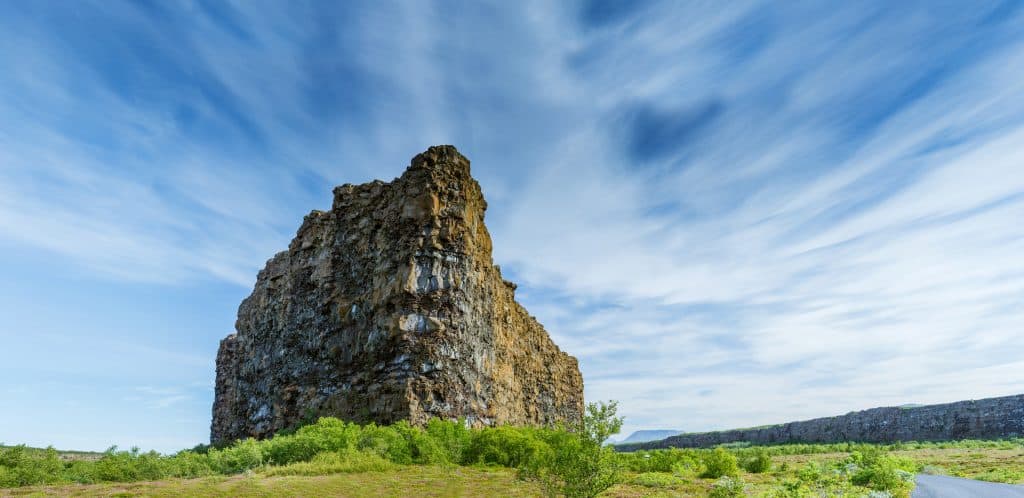
Hljóðaklettar could be translated as the Whispering Rocks because of its mysterious echo. The series of amorphous basalt forms different kind of bizarre rock formations, from honeycombed surfaces to columns and an almost perfectly symmetric arch called the church. In the north the landscape opens up to Vesturdalur, where two petrified trolls Karl and Kerling and their cave can be found. In the south the landscape changes to a vivid red volcanic hillside. Different circular hiking trails guide around the area. There is a campsite at Vesturdalur.
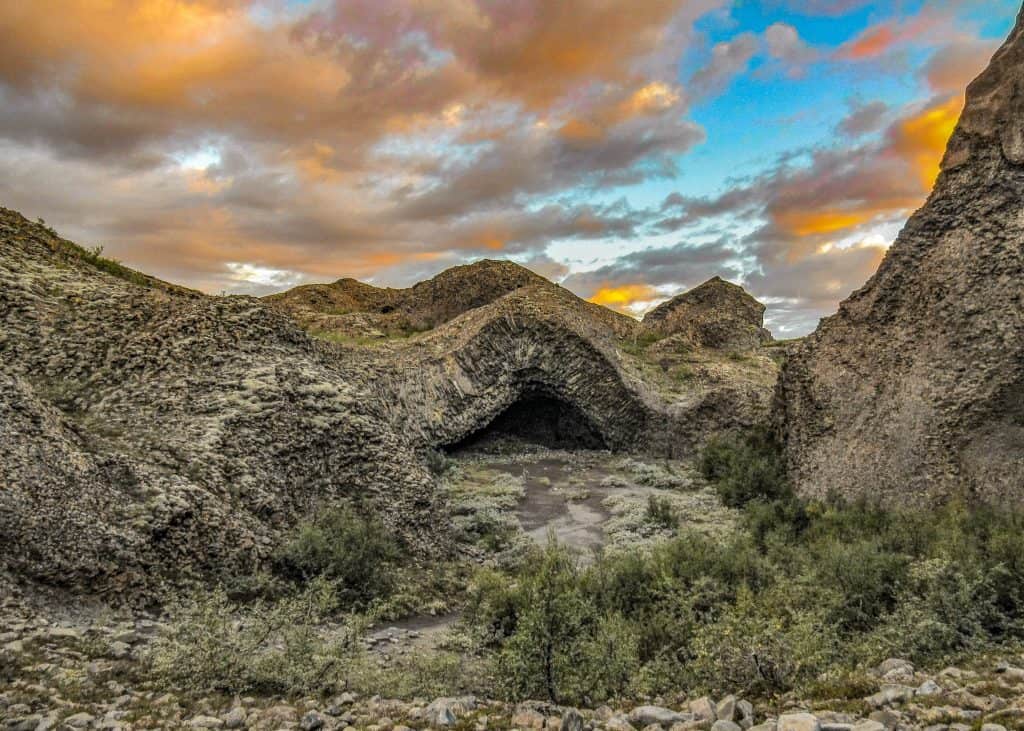
Dettifoss is the most powerful waterfall in Europe, with its massive 500 m³ of water thundering from the height of 44 m every single second down into a 100 m wide abyss. The spray of the water can be seen already several km away. The stark, rocky surrounding forms the perfect backdrop for such untethered natural power. About 1 km easy walking upstream is the humble and beautifully shaped Selfoss waterfall which stands in stark contrast to its thunderous companion. Hafragilsfoss is another amazing 27 m waterfall, located about 4 km downstream.
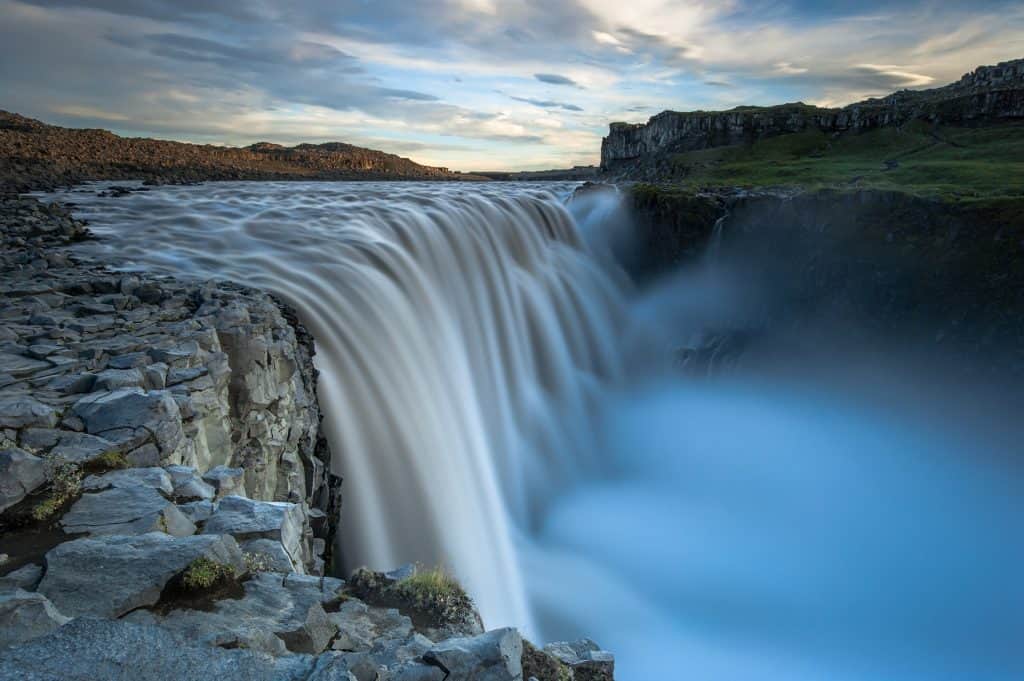
Krafla is part of a large volcanic system and one of the country’s most explosive volcanoes. Endless lava fields, puddles of boiling mud and evaporating steam are witnesses of the last eruptions 1975–84 and remind on how the earth underneath has not settled yet. The crater Víti with its turquoise lake is a remain of a large explosion and is much easier to reach than its namesake next to Askja. The correspondent geothermal powerstation has a visitor’s centre open in summer time.
Just before Námaskarð Pass the large geothermal field of Hverir forms a landscape in different shades of orange and brown. The countless pools of boiling mud, hot springs and hissing chimneys form a Mars-like scenery. Námafjall hill offers a stunning view over the green and blue landscape of Mývatn and surrounding.
Mývatn Nature Baths are the north’s answer to the Blue Lagoon in the south. The water contains a rich blend of minerals, silicates and micro organisms, giving it the beautiful blue colour and enhancing its healing properties. Situated in a lava field overlooking the beautiful Lake Mývatn, this is a wonderful place to relax and recharge.
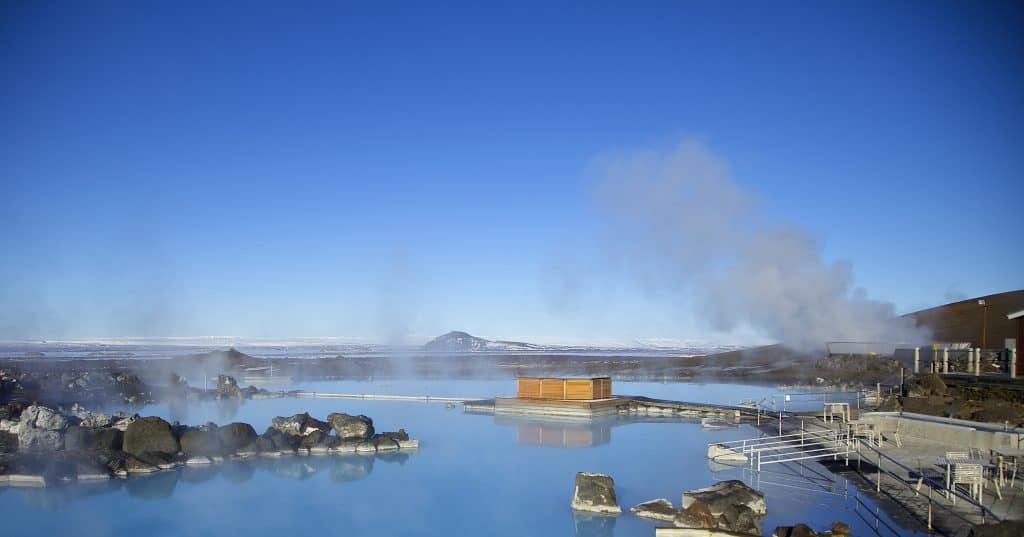
Down in a fissure in the lava crust is the cave Grjótagjá, which is filled with hot water. Although it was once a popular bathing location, bathing is prohibited now.
On the eastern shore of Mývatn is Hverfjall, a tuff ring volcano. The top of the mountain is shaped like a concave bowl and stands in contrast to the craggy surrounding mountains. A hiking paths leads up to the top on one side and down on the other directly to Dimmuborgir. The area of daunting lava formations and home to Grýla, an intimidating troll matriarch, is made up of volcanic caves, chimneys and pillars resembling fallen citadels and strange creatures. This area is on the east side of Lake Mývatn.
Sigurgeirs Bird Museum at Ytri- Neslönd on the shores of Lake Mývatn is a comprehensive private bird collection resulting from one man’s passion, Sigurgeir Stefánsson. The museum provides an opportunity to see and learn about Icelandic birds in and out of season. Lake Mývatn is home to dozens of species of nesting birds and a paradise for birdwatchers.
Most of the year Hólasandur is a black desert between Mývatn and Húsavík. In the short period where the lupine is blossoming in summer it turns into an endless ocean of violet flowers.
